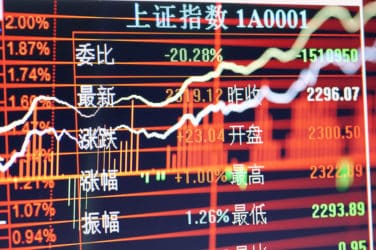ESMA will place-hold for MiFID II; regulators in the U.S. and Asia watch closely
The jet stream from North America is carrying more than air passengers—increased wariness on the part of financial regulators is also crossing the Atlantic Ocean.
Beset by multiple widely publicized market glitches this year, the U.S. automated-trading sector is under intense regulatory scrutiny. Given today’s rapid-fire global market in which disruptions can cascade across borders, the snafus have given European rule makers renewed impetus to examine their own defenses.
No matter the continent, regulators’ primary objective is to maintain fair and orderly markets, a benign state which in turn should encourage participation, boost liquidity, and allow for robust capital formation. To a certain extent, that dynamic—or at least its perception—has hit turbulence.

Paul Squires, head of trading, Axa IM
Recent headlines about market disruptions “are very damaging for very fragile investor confidence,” said Paul Squires, London-based head of trading at Axa Investment Managers, which manages about $671 billion. “Your average retail investor, if they were going to put a bit of money back into equities, are just going to say I’m off again.” This year’s problem events are well-known, even to casual observers of the market: Knight Capital’s software glitch and the Facebook and Bats initial public offerings on the Nasdaq and Bats exchanges, respectively. Two and a half years ago, the much more far-reaching ‘flash crash’ sent stock prices temporarily haywire.
With high-frequency trading—often fingered as a root cause, or at least an accelerant, of market disruptions—apparently here to stay, regulators in Europe and elsewhere are trying to get out ahead of the next problem.
The European Securities and Markets Authority has been quick off the mark and has already written detailed reforms to better monitor algorithmic trading practices. These rules, in effect since May, were introduced to foster convergence in supervisory practices regarding automated trading across the 27 member states of the European Union.
The guidelines hold implications for asset managers, providers and users of direct market access as well as regulated trading venues.
Gatekeepers Charged

Matthew Coupe, sales director, Redkite Financial Markets
A key focus of Esma is charging trading platforms, as market gatekeepers, with monitoring the activities of their participants for suspicious or illegal activity such as ‘ping orders,’ ‘quote stuffing,’ ‘momentum ignition,’ and ‘spoofing.’
“It’s a starting point,” said Matthew Coupe, sales director of RedKite Financial Markets, a U.K. provider of real-time market surveillance systems that was recently acquired by Nice Systems.
“The Esma rules are a very good step as firms know what they need to do and they need to wake up and be able to do it,” Coupe said. “But when you’re looking at the guidelines, the one problem is that they are guidelines. People are wondering if they are going to get nailed on it.”
“The Esma guidelines are a clarification of the market abuse directive and, yes, they are constraints,” said Philippe Carré, global head of client connectivity at SunGard’s capital markets business in London.

Philippe Carré, global head of client connectivity, SunGard
“It crystallizes a lot of things that are good business practices. But there is nothing in there that is shocking or a complete divergence from current practices,” Carré said. “You want front-running and insider dealing to be severely punished and crystallized in law so you need to make sure that financial markets are as transparent as possible.”
While rules are yet to be finalized, doing nothing is probably not an option for European market participants, as no firm wants to be first to trip over the guidelines.
“Esma has outlined some fairly strict practices that they expect algo developers to follow before the software goes live,” said Bruce Bland, head of algorithmic research at trade-technology provider Fidessa.
“They include back-testing and performance testing,” Bland said. “In other words, how would the algo’s performance be affected if the markets were trading fast? That will force algo developers to revisit their way of doing things.”
Esma itself believes more time is needed before it can be judged on its guidelines. But the Paris-based pan-European watchdog is confident that the automated trading rules are a step in the right direction.
“Given the guidelines were only introduced in May 2012, it seems a bit premature to finally assess this,” said Reemt Seibel, an Esma spokesperson.
“But it is fair to say that both Esma and the European Union’s national regulators will ensure that firms engaging in HFT, and the venues where HFT takes place, have sound internal rules and procedures in place to mitigate possible risks,” Seibel said. “The overarching aim is to increase the safety of algorithmic trading by clarifying the systems and controls.”
U.S. regulators have generally lagged behind Europe in addressing algorithmic and high-speed trading, though the recent spate of market glitches has ratcheted up pressure for rule makers to act. In an October trading-technology roundtable hosted by the Securities and Exchange Commission, the implementation of a so-called ‘kill switch’ to allow a market participant to shut down trading, and a best-practices guide to electronic trading were two key takeaways.
Esma Leads
“The U.S. regulators are all hoping to follow Esma,” said Terry Keene, president and chief executive of iSys, a U.S. technology vendor.
“The SEC set up the roundtable after the Knight fiasco but is a bit of a delay tactic” to buy time for U.S. regulators to observe Esma, Keene said. “They are sitting back and saying these guys (at Esma) have got a little bit militant and let’s see what happens.”
Some market participants believe that industry self-regulation should be tried first, before politicians enact rules that may result in substantial unintended consequences.
“Politicians are aware of high-frequency trading, but the HFT community is sometimes the first one to shoot itself in the foot” with an incident, said Carré at SunGard. ”Of course, it looks terrible.”
Carré suggested industry-led steps, such as exchanges fining traders who cancel too many orders per execution. “There are things that can be done before this is crystallized in regulation,” he said. “It is such a difficult issue to bring out into the open and to discuss, as it’s so politically charged. It is going to take some time.”
“But it is sometimes hard to work out if it is a financial question or a political question now, as HFT has become such a focal point,” Carré continued. “There are some people who think fundamentally that HFT is bad for the markets and they need to be banished and punished. While others say they provide a service, almost a market-making service to a certain extent, and provide liquidity to the market and it is only the abuse of some HFT practices which is reprehensible.”
Then there is Asia. With its many disparate jurisdictions and markets running behind the U.S. and Europe in terms of high-speed trading, it may be some time before rules there take shape. This has some market participants in Europe and the U.S. considering Asia as their next stop if rules in their home countries tighten too much. “If the regulations go too far, business will move elsewhere,” said Mark Spanbroek, secretary-general of Brussels-based FIA European Principal Traders Association, an industry group representing such firms as Knight Capital, Optiver, Getco, Citadel, and Quantlab.
“It doesn’t take a whole lot to move an exchange these days—a couple of lines and a couple of data centers.”
Keene at iSys concurs. “Asia is already assuming that Esma is going to come down hard on HFT in Europe and they are preparing for it,” he said. “Many venues in Asia are building out exchanges that can handle half the volume of what is going on in Europe today.”
Singapore and Hong Kong stand to gain the most, according to Keene. “Asian markets are really competitive,” he said. “They really love the volume, so they will be much more accommodating and much more open to negotiation. It’s kind of like the old West; it’s like a new frontier and there is going to be a lot of flexibility.”
While Asia hasn’t developed much in the way of high-speed trading rules yet, the continent has the benefit of watching and learning from what’s going on in Europe and the U.S., and ultimately may be first with the right structure to effectively manage high-speed trading and inject much-needed confidence and trust back into markets.
“Asia is rapidly catching up, and I don’t think there will be that 12- to 24-month regulatory lag that we have seen previously,” said Coupe at RedKite. “There is a real active involvement from market participants in Asia over automated trading. It is refreshing as Asia is more geared up and thinking about it more than they are even in Europe.”
“I don’t know if they will start taking the lead but the regulators are very sensitive towards it,” Coupe continued. “They are asking a good number of questions and trying to build systems that will tackle the issues,” including Asia-specific concerns such as market fragmentation and a rise of broker-operated dark pools, he said.
In July, Hong Kong’s market watchdog, the Securities and Futures Commission, proposed that all algorithms should be tested at least annually and that it should be the responsibility of brokers to have systems in place to spot and prevent erroneous trades hitting the market.
Regulatory Chase
The job of regulators is a tough one, especially amid the rise in computational power and the increasing reliance by traders and investors on machines to execute trades as fast as possible. Traders generally are known to keep one step ahead of regulators, and the gap may widen in a high-speed environment.
“The aim of every financial institution is to get to the market as quickly as possible,” said Simon Garland, chief strategist of Kx Systems, a U.S.-based provider of high-performance database and time-series analysis. “Technologists pull out all the stops to get the best possible performance.”
Garland believes that monitoring algos in real time will prove almost impossible.
“If someone has played every trick in the book to get in and trade or do something, there’s no way any monitoring could be looking at what they are doing and seeing if that is sensible,” said Garland. “They can’t say, ‘wait, stop’. It’s already moved on 100 meters down the road by then.”
And the software and manpower that regulators use to combat all of this is not as sophisticated as that of the high-frequency traders, who generally spend more on technology than everyone else in the market and also pay employees more.
“The regulators need at least as good a toolkit as the organizations they’re monitoring,” said Garland. “In practical terms, this means having the databases, the data and the time and skill to analyze what’s happening in the market.”
While generally safe in Garland’s view, “algorithms have to be extensively tested, often by back-testing against two years, three years or four years of historical data. But despite that, occasionally something a little bit different happens” in a live market, he said. “It doesn’t have to be something vastly different, it just needs to be a combination of factors that hasn’t been seen before…algos can do vastly more damage than five or 10 years ago.”
The back-testing of algorithms, although important, can only do so much and once an algo is launched on to a live market, as has been shown, almost anything can happen.
“Algorithms are complex enough that it takes a seasoned practitioner to understand them just in isolation, and nobody understands what happens as they interact with each other,” David Lauer, a former high-frequency trader, told a U.S. Senate Banking Committee hearing in late September.
With this in mind, maybe the politicians and regulators are right to be worried even if algos are becoming slightly less faulty. “We should try and make everything work to monitor HFT,” said Spanbroek of FIA Epta.
But it could be that the industry does have the answers after all, and all it needs to do is produce a concerted effort that will show that it is taking the necessary steps to nip the problem in the bud. “People know what they need to do and they need to wake up and be able to do it,” said Coupe at RedKite.
“However, the key thing is to make sure the industry engages with the regulators to make sure there is no political elements that come through from the rules and that we have proper rules which can make sure we have a closer-regulated market which has greater security checks in place to make sure nothing goes awry but also to not preclude business,” Coupe said. “The key thing is we don’t want anything that is going to put any speed bumps in the way of doing business, as volumes are low enough as they are.”




